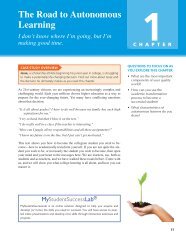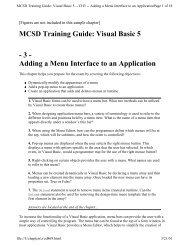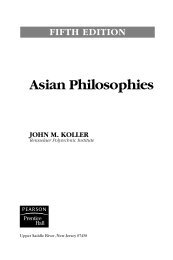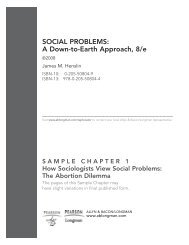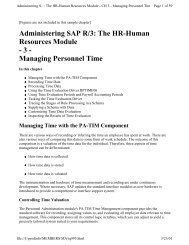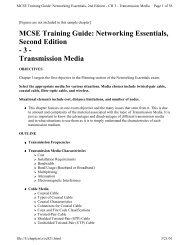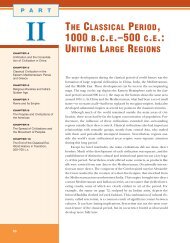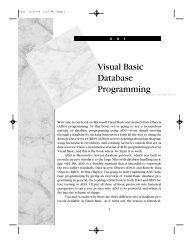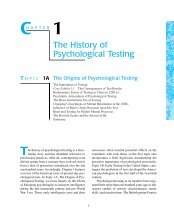CULTURE, language, AND COGNITION
CULTURE, language, AND COGNITION
CULTURE, language, AND COGNITION
You also want an ePaper? Increase the reach of your titles
YUMPU automatically turns print PDFs into web optimized ePapers that Google loves.
GA305c05.qxd 4/30/2004 11:26 AM Page 124<br />
124 culture, Language, and cognition<br />
� Further Readings<br />
J. Altarriba (2000). Bilingualism: Language, memory, and applied issues. In W. J.<br />
Lonner, D. L. Dinnel, S. A. Hayes, & D. N. Sattler (Eds.), Online Readings<br />
in Psychology and Culture (Unit 4, Chapter 4), (http://www.wwu.edu/~<br />
culture), Center for Cross-Cultural Research, Western Washington University,<br />
Bellingham, Washington.<br />
Bilingualism, or the knowledge of more than one <strong>language</strong>, is prevalent<br />
throughout the world. However, much of the cognitive literature on<br />
<strong>language</strong> processing and memory retrieval has included participants<br />
who are monolingual speakers. This on-line chapter introduces th ways<br />
in which bilingualism has been investigated in the areas of autobiographical<br />
memory, memory recall, and communication in applied settings<br />
and offers suggestions for further research.<br />
S. H. Elgin. (2000). The Language Imperative. Cambridge, MA: Perseus Books.<br />
In a conversational style, this book addresses many issues of culture and<br />
<strong>language</strong>. It discusses the linguistic relativity hypothesis, debates about<br />
multilingualism, and the power of <strong>language</strong> in different social and cultural<br />
contexts (business, family, medicine, religion).<br />
Sandra G. Kouritzin (1999). Face(t)s of First Language Loss. Mahwah, NJ: Lawrence<br />
Erlbaum Associates.<br />
This book contributes to the understanding of first <strong>language</strong> loss in both<br />
immigrant and indigenous communities in (at least) 3 ways. First, it provides<br />
insight into the process of first <strong>language</strong> loss and the factors contributing<br />
to it. Second, it attempts to define, from an insider perspective,<br />
what it means to “lose” a <strong>language</strong>. Third, it analyzes the perceived consequences<br />
of first <strong>language</strong> loss in terms of social, academic, emotional,<br />
and economic factors. Moreover, the book gives voice to 5 different<br />
story tellers who relate the histories of their first <strong>language</strong> while learning<br />
English. (From the cover.)<br />
John Naisbitt. (1996). Megatrends Asia: Eight Asian Megatrends That Are Reshaping<br />
Our World. New York: Simon & Schuster.<br />
One of the world’s leading trend forecasters describes the significant political,<br />
social, business, and cultural values and beliefs that will change<br />
the world as we know it. A “new Asian way” of thinking is emerging<br />
that reflects increased individualism and urbanization and a more modern<br />
role for women.<br />
Barbara Rogoff. (1990). Apprenticeship in Thinking. New York: Oxford University<br />
Press.<br />
This book overflows with examples of parents leading their children<br />
through rough and calm cognitive seas to new levels of thinking. Illustrations<br />
of daily activities performed in scores of cultures fill almost<br />
every page of this book, which was written by one of the most prominent<br />
proponents of the cultural context perspective.



